Introduction
Introduced at CES at the beginning of the year, the Panasonic Leica DG Nocticron 42.5mm (85mm equivalent) f1.2 ASPH OIS is an ultra high-speed and stabilized model designed to tackle portraits in available light.
Unsurprisingly perhaps for a lens with a $1,600 ticket, it adopts an advanced optical formula consisting of 14 elements in total, arranged in 11 groups, including two aspheres, one low dispersion and one high refractive index glass element.
Adopting a new “Nocticron” moniker for its high-speed design, the new model features Nano lens coating for improved contrast, a circular diaphragm consisting of nine-blades and a metal exterior complete with an aperture collar. As this lens is likely to appeal to video enthusiasts as much as stills photographers a stepper motor is used for smooth, near silent autofocus.
While not exactly small with a 67mm front accessory thread and measuring 2.91 x 3.03″ (74 x 77mm) this lens is more compact than rival offerings for full-frame models and is only moderately heavy at 14.99 oz (425 g). It is available now at $1,599.
Panasonic Leica DG Nocticron 42.5mm F1.2 ASPH mounted on Olympus OM-D E-M1: Highest ranking M4/3 lens to date
With a DxOMark Lens score of 28 points, the Nocticron is one of the best performing models in the line-up, either from Panasonic or rival Olympus. In fact the score puts it ahead of competing models, albeit being just 1-point above the next best performing Micro Four Thirds lens in our database.
Unsurprisingly perhaps, this lens has high peak sharpness equating to 12P-Mpix, relatively low vignetting and distortion, while also achieving generally good control of chromatic aberration, despite the high figure (which is a result of fringing in the extreme corners of the frame, and easily removable in post.
 |
 |
 |
 |
| Panasonic Leica DG Nocticron 42.5mm F1.2 ASPH | 1600 | 28 | 12 |
| Olympus M.ZUIKO DIGITAL ED 75mm F1.8 | 899 | 27 | 12 |
| Panasonic Leica Summilux DG 25mm F1.4 | 579 | 24 | 11 |
| Olympus M. Zuiko Digital ED 45mm f1.8 | 389 | 23 | 9 |
| Panasonic Lumix G 20mm F1.7 ASPH | 400 | 22 | 11 |
| Olympus M. Zuiko Digital ED 12mm f2.0 | 769 | 22 | 10 |
| Olympus M.ZUIKO DIGITAL 17mm f1.8 | 500 | 22 | 7 |
| Panasonic Leica DG Summilux 15mm F1.7 ASPH | 599 | 21 | 11 |
| Sigma 60mm F2.8 DN A Micro 4/3 | 239 | 21 | 10 |
| Panasonic Lumix G 20mm F1.7 II ASPH | 400 | 21 | 10 |
| Olympus M.ZUIKO DIGITAL ED 60mm F2.8 Macro | 499 | 19 | 10 |
| Panasonic Leica DG Macro-Elmarit 45mm F2.8 ASPH OIS | 668 | 18 | 8 |
| Sigma 30mm F2.8 DN A Mount 43 | 199 | 18 | 8 |
| Sigma 19mm F2.8 DN A Mount 43 | 199 | 18 | 7 |
| Sigma 30mm F2.8 EX DN Micro 4/3 | 240 | 17 | 8 |
| Sigma 19mm F2.8 EX DN Micro 4/3 | 166 | 16 | 6 |
| Olympus M.ZUIKO DIGITAL 17mm f2.8 | 300 | 15 | 6 |
| Olympus 15mm 1:8.0 Body Cap | 79 | 5 | 3 |
Panasonic Leica DG Nocticron 42.5mm F1.2 ASPH Versus Olympus M.ZUIKO DIGITAL ED 75mm F1.8 Versus Olympus M. Zuiko Digital ED 45mm f1.8: Fastest and highest performing of its type
Comparisons with the M.Zuiko Digital ED 75mm f1.8 are inevitable, although the two are likely to be used for slightly different purposes – the narrower field of view of the 75mm favors indoor sports and outdoor portraits.
Nevertheless the two are close in overall IQ. In terms of sharpness the Nocticron has similarly high levels though it doesn’t quite match the uniformity of the 75mm. Some slight gains in sharpness in the center are offset by slightly lower sharpness in the outer field. Optimum performance is achieved at f4 and is by then just slightly ahead of the 75mm across the field. What stands out with the 75mm (and the 45mm as well) is the firm’s control of chromatic aberration and vignetting.
Olympus also offers a model that will, arguably, more directly compete with the new Leica lens. The 45mm is just a quarter of the price, and at f1.8, less than ½ a stop slower (1/3 stop when measured). If spending your hard earned cash you’ll be pleased to know the Leica model is sharper at f1.2 than the 45mm at f1.8 and is noticeably superior at f2.8 across the field. At smaller apertures the difference in sharpness diminishes incrementally to f8-11 where the two share similar performance due to the effects of diffraction.
Panasonic Leica DG Nocticron 42.5mm F1.2 ASPH image quality at F1.2
Performance at the initial aperture is impressive with acutance at 60% across the central 60% of the frame. Across the field uniformity differs by less than 13%, while astigmatism, one of many troublesome aberrations in large aperture lenses like this, is practically negligible.
Vignetting is not as troublesome as it once was film, as it’s easily corrected with digital, but even at f1.2 the Leica has relatively low levels. It has less than 1/3rd of stop in the periphery (from 0-50% of the field), increasing to -1.2 stops at the extreme corners (at the 95-100% field position).
Control of aberrations, in this case CA, is of course critical for image quality and while lateral chromatic aberration is low at maximum aperture there’s some evident in the extreme corners. However, this and the lower CA occupying a ring located between 10-60% of the field (see above) can be removed successfully using software.
Conclusion
Although this is a bold step for Panasonic, the price is a going to be a stumbling block for the majority, particularly as it has to sway users away from the diminutive and accessibly priced Olympus 45mm f1.8.
That model is both discrete and a very good performer, although it’s someway behind in build and in outright optical quality. Looking at the line-up as a whole it’s uncomfortably close to 45mm and the longer 75mm f1.8, yet there seems little doubt it will tempt enthusiasts looking for an edge in performance and to the advantages of returning to an aperture ring.


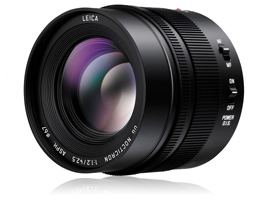


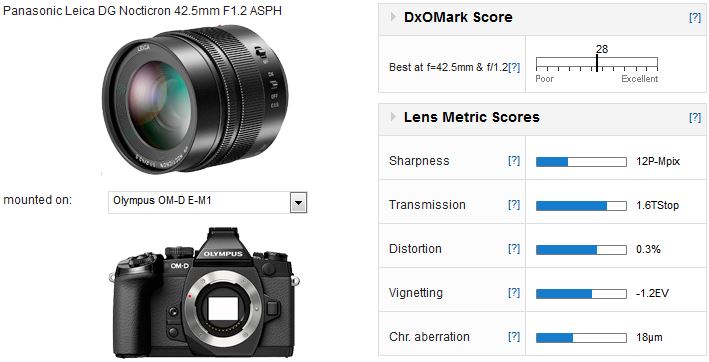
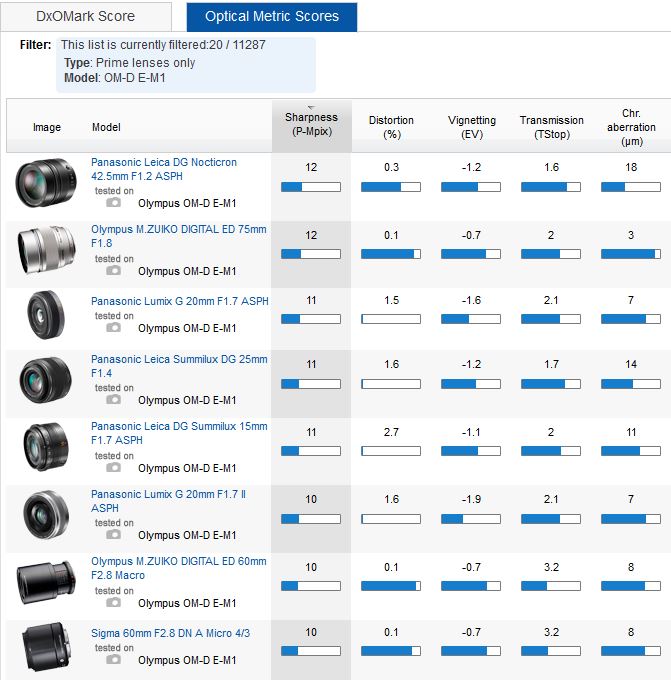
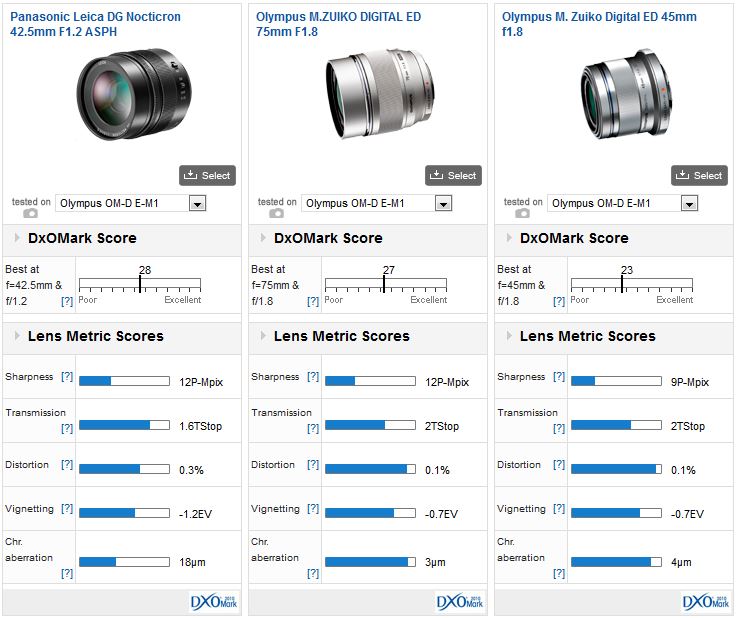
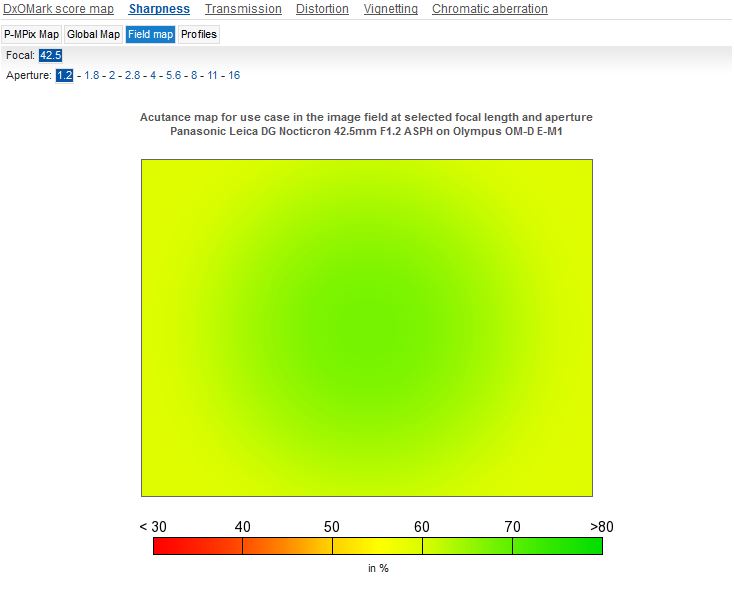
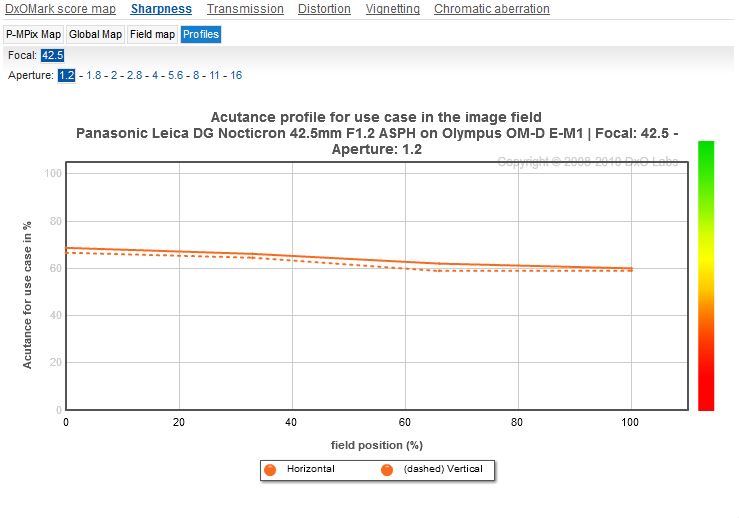



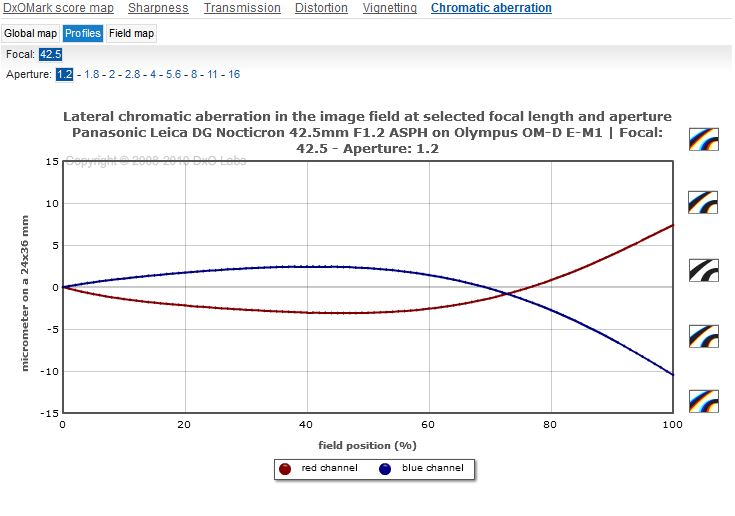
DXOMARK encourages its readers to share comments on the articles. To read or post comments, Disqus cookies are required. Change your Cookies Preferences and read more about our Comment Policy.